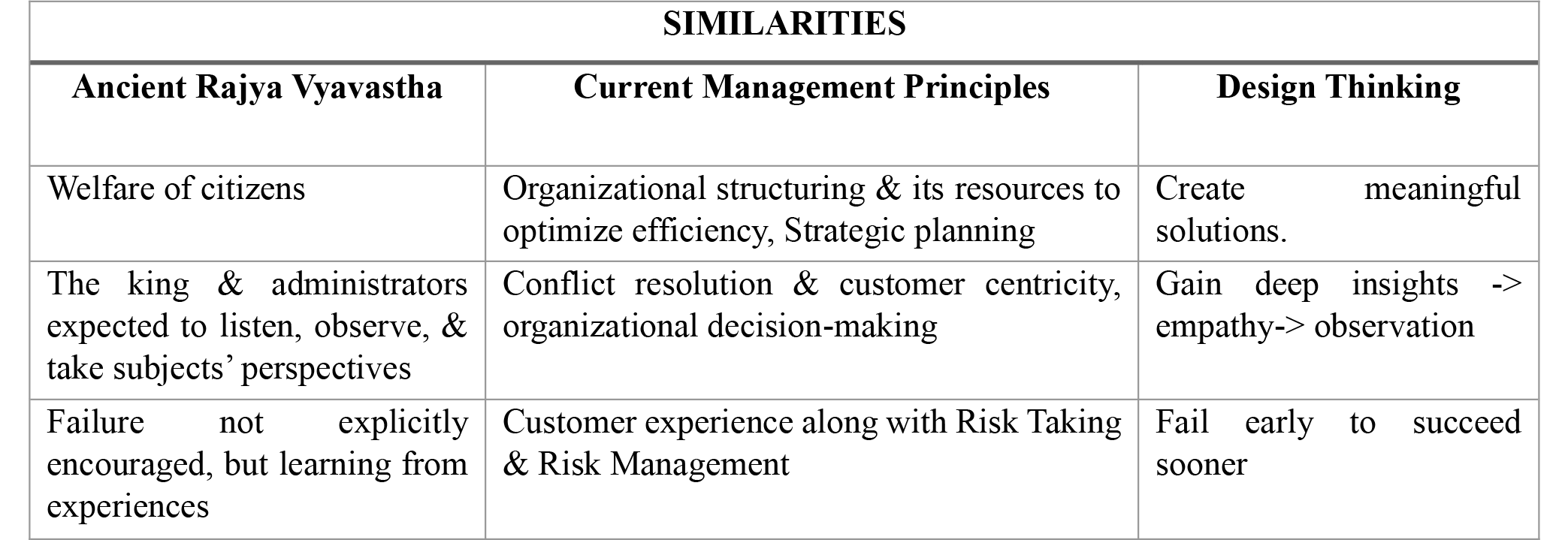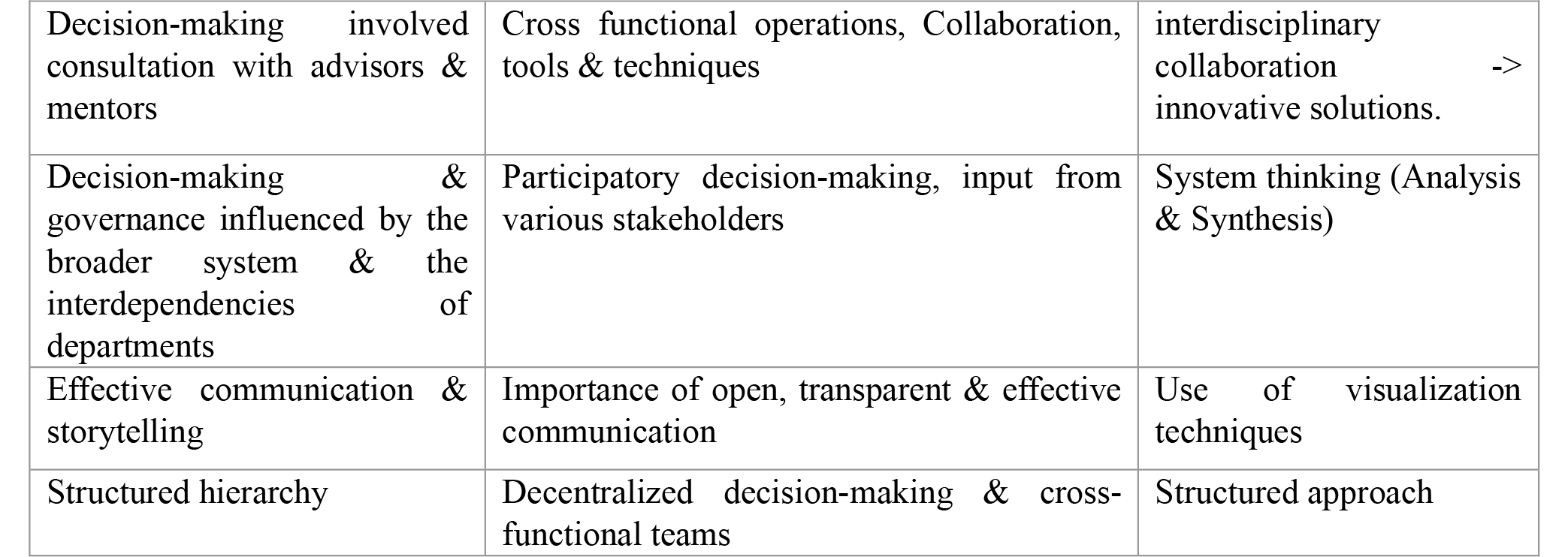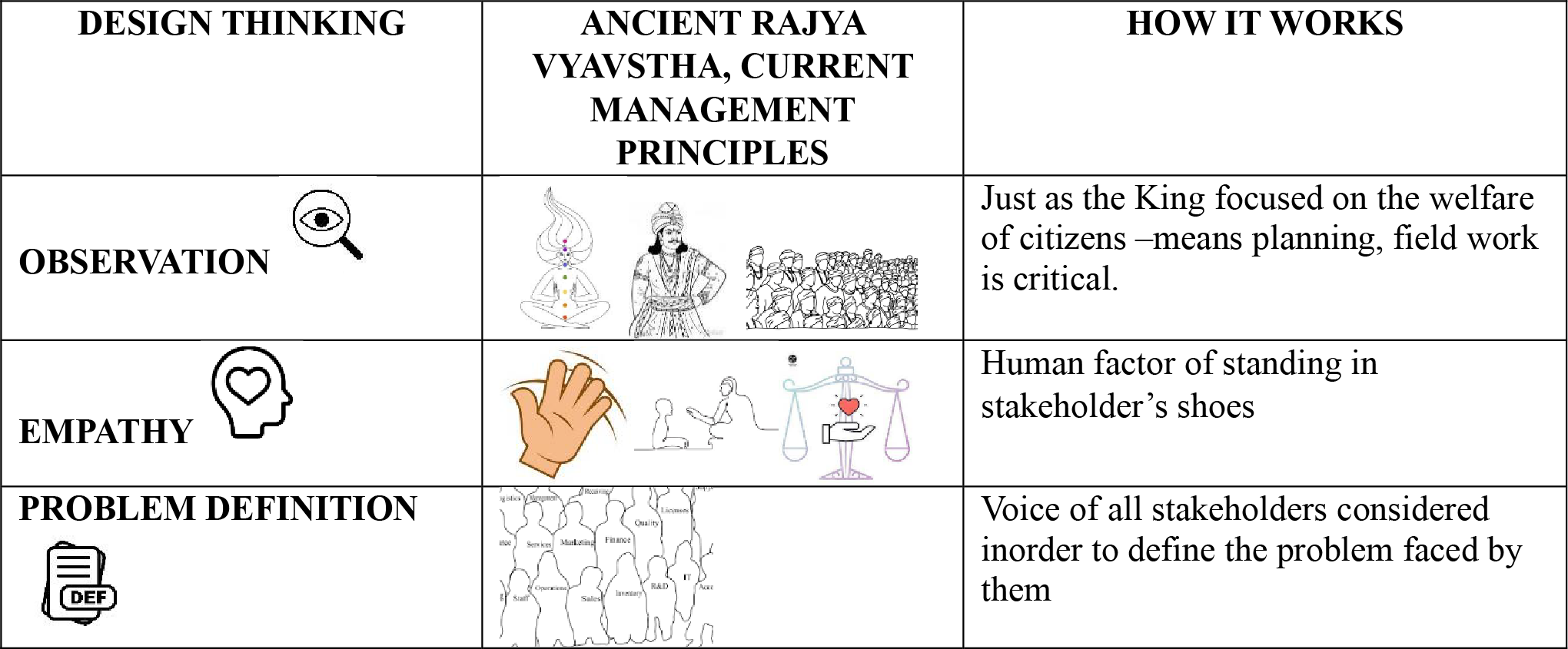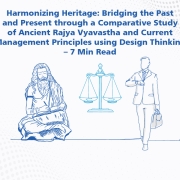Harmonizing Heritage: Bridging the Past and Present through a Comparative Study of Ancient Rajya Vyavastha and Current Management Principles using Design Thinking – 7 Min Read
“Harmonizing Heritage: Bridging the Past and Present through a Comparative Study of Ancient Rajya Vyavastha and Current Management Principles using Design Thinking”
This Research paper presents a comparative analysis of the ancient Rajya Vyavastha system and current management principles based on design thinking. Ancient Rajya Vyavastha, also known as ancient Indian governance system, refers to the political, administrative, and social structures. Rajya Vyavastha was a comprehensive system that encompassed various aspects of governance, including the principles of leadership. Design thinking is a process with stages of understanding, observation, empathy, problem definition, ideation, prototyping & testing. Drawing upon research and analysis, this comparative study identifies commonalities and disparities between Rajya Vyavastha and current management principles. It investigates various dimensions, such as decision-making processes, organizational structures, stakeholder engagement, and problem-solving methodologies.
INTRODUCTION
The ancient education system and the Rajya Vyavastha were intricately intertwined, forming the pillars of the society. The ancient education system, based on the gurukul tradition, nurtured students into academic knowledge but also in moral values, customs, and traditions. It instilled a sense of discipline and self-reliance. This holistic approach to education aimed at producing well-rounded individuals.
Overview of Ancient Indian Education System & Ancient Rajya Vyavastha
The traditional education system, characterized by confined classroom spaces, primarily focuses on acquiring information. The beauty of this system lay in its autonomy, as the society refrained from interfering with the curriculum, teaching methods, and the process of acquiring knowledge. Ancient India embraced both formal and informal modes of education. As time progressed, the education system underwent a significant transformation. Modern-day education emphasizes interdisciplinary approaches and practical applications. Ancient Rajya Vyavastha was characterized by a hierarchical structure and a set of principles that guided the functioning of the state. The administration was organized into various departments/ministries, each headed by a minister who assisted the king in decision-making and policy implementation. The ancient Rajya Vyavastha played a crucial role in maintaining social order, promoting economic prosperity, fostering a harmonious and inclusive society.
Modern Management Principles
Figure 1 Current management principles.
COMPARATIVE STUDY

Table 1 Similarities between Ancient Education System & Current Management Principles

Table 2 Dissimilarities between Ancient Education System & Current Management principles


Table 3 Similarities between Ancient Rajya Vyavastha & Current Management Principles

Table 4 Dissimilarities between Ancient Rajya Vyavastha & Current Management Principles
DESIGN THINKING TOOLS


Table 5 How Design Thinking Tools work in context to the Ancient Rajya Vyavastha & Current
Management Principles
CONCLUSION
The study has highlighted the enduring principles of effective leadership, decision-making, and fostering innovation, which are evident in both ancient and modern management approaches. We have gained a deeper understanding of the timeless principles that underpin successful governance and management. By blending the wisdom of the past with the tools and insights of the present, we can cultivate effective leaders and foster a culture of innovation, creating a success future for organizations and societies as a whole.



